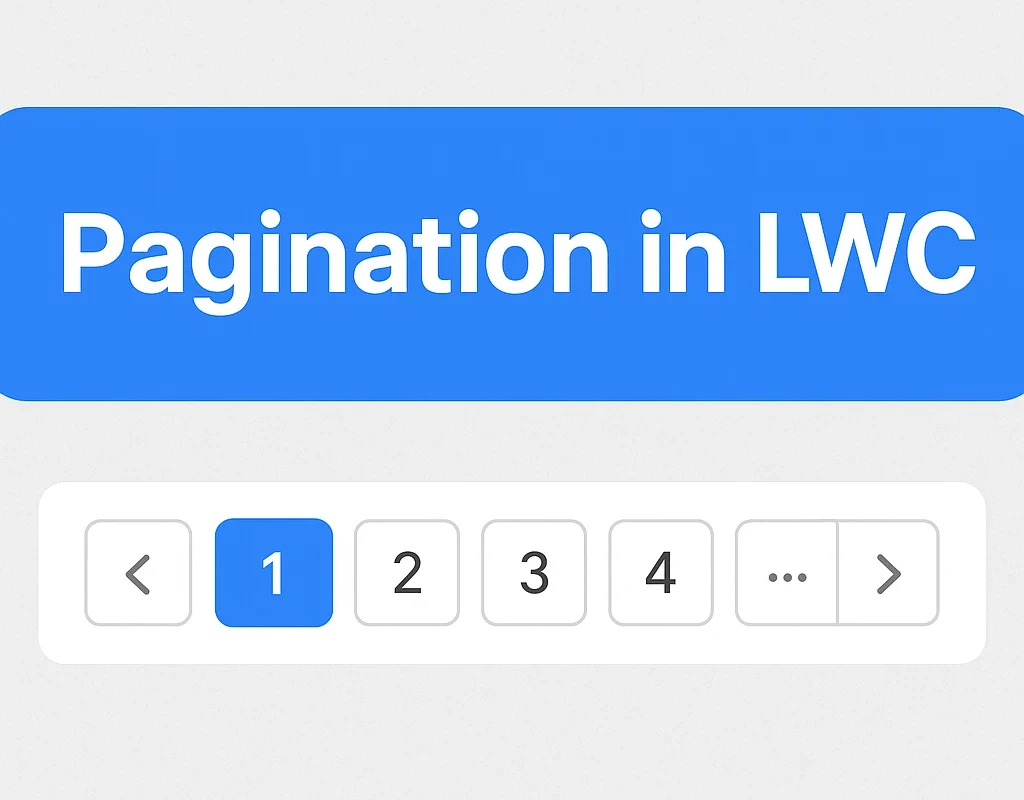
In modern Salesforce applications, handling large datasets efficiently is crucial for providing a smooth user experience. Pagination in LWC (Lightning Web Components) is one of the most effective ways to manage and display a large amount of data without overwhelming the UI or impacting performance. In this article, we’ll cover everything about implementing pagination in LWC with best practices, step-by-step examples, and tips to optimize it for Salesforce.
What is Pagination in LWC?
Pagination in LWC is the process of dividing large datasets into smaller chunks (pages) and allowing users to navigate through these chunks using next and previous controls. Instead of rendering all records at once—which can slow down the UI—pagination ensures that only a limited number of records are loaded at a time.
Why Do We Need Pagination in LWC?
-
Improves Performance: Loading hundreds or thousands of records simultaneously can slow down the UI.
-
Enhances User Experience: Users can easily navigate smaller sets of data.
-
Reduces Server Load: Efficient data fetching reduces unnecessary queries and CPU usage.
-
Scalable UI Design: Pagination ensures your components remain responsive for any dataset size.
Approaches for Pagination in LWC
There are two common ways to implement pagination in LWC:
1. Client-Side Pagination
-
Fetch all records from the server at once.
-
Split the dataset into smaller chunks using JavaScript on the client side.
-
Navigate between these chunks using pagination controls.
Pros:
-
Faster navigation after the first load.
-
No additional server calls for switching pages.
Cons:
-
Not suitable for very large datasets due to memory limitations.
2. Server-Side Pagination
-
Fetch only the records required for the current page from the server.
-
Call the server (Apex method) when moving to the next or previous page.
Pros:
-
Handles large datasets efficiently.
-
Reduces initial load time.
Cons:
-
Requires server calls for each page navigation.
Example: Implementing Pagination in LWC
Below is a simple pagination in LWC example using client-side logic.
Apex Controller (PaginationController.cls)
LWC JavaScript (paginationExample.js)
LWC HTML (paginationExample.html)
Best Practices for Pagination in LWC
-
Choose the Right Approach:
Use client-side pagination for small datasets and server-side pagination for large datasets. -
Optimize SOQL Queries:
Always useLIMITandOFFSETfor server-side pagination to avoid fetching unnecessary data. -
Use Cacheable Apex Methods:
For read-only operations, mark Apex methods as@AuraEnabled(cacheable=true)to enhance performance. -
Provide a Smooth UI:
Show loading indicators when switching pages to improve the user experience.
FAQs on Pagination in LWC
Q1: Which is better, client-side or server-side pagination in LWC?
A1: Client-side is faster for small datasets, while server-side is ideal for large datasets to reduce memory usage and improve performance.
Q2: How can I implement server-side pagination?
A2: Fetch records in batches using SOQL with LIMIT and OFFSET, and call the Apex method whenever the user navigates to a new page.
Q3: Can we combine infinite scrolling with pagination in LWC?
A3: Yes, you can use lazy loading to fetch more records as users scroll, which is a type of server-side pagination.
You may like : Salesforce Integration
Conclusion
Pagination in LWC is essential for building scalable Salesforce applications that can handle large datasets efficiently. By understanding when to use client-side vs server-side pagination, optimizing SOQL queries, and providing a smooth navigation experience, you can significantly enhance your Lightning Web Components’ performance.

